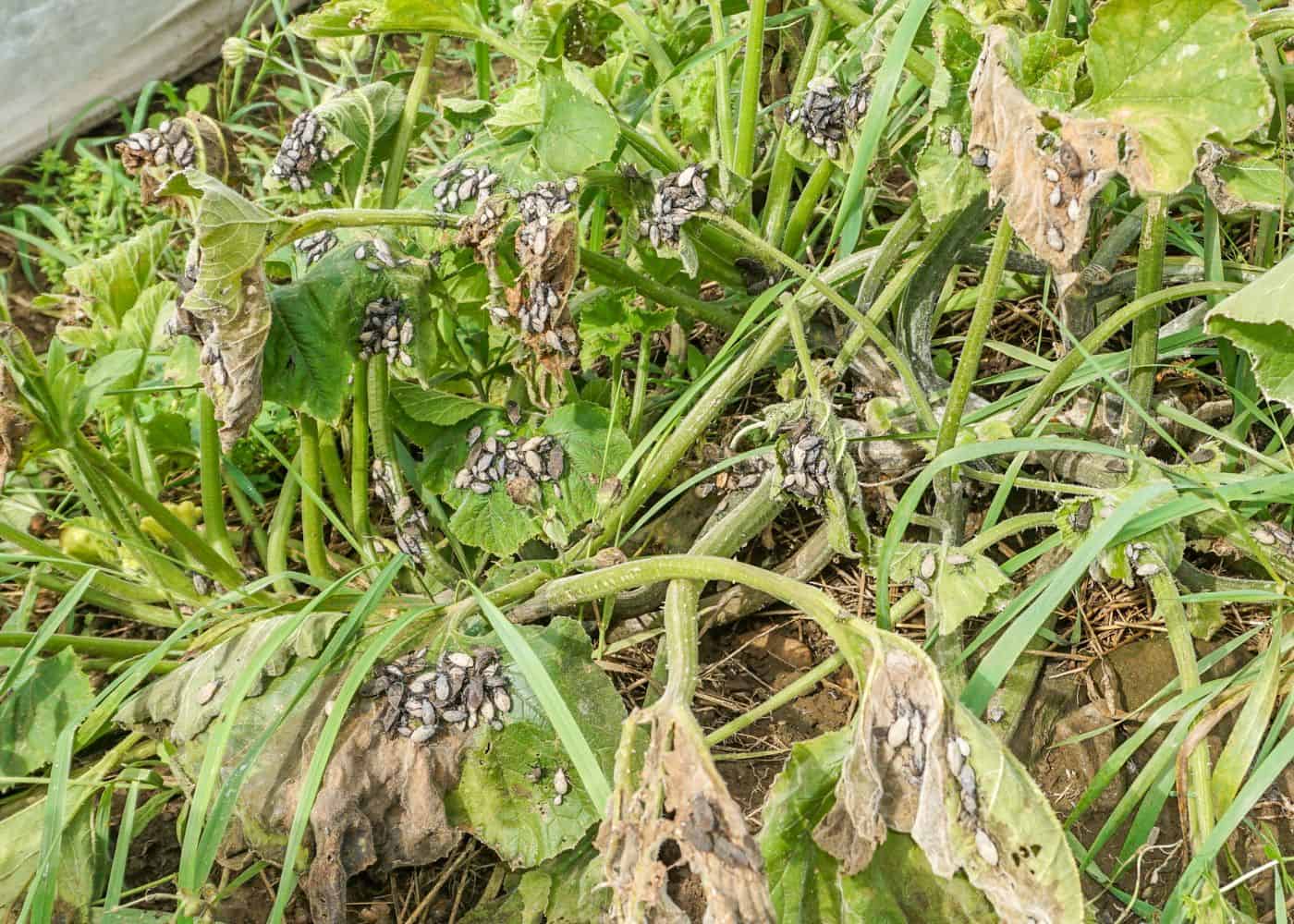No gardener wants to deal with pests in the vegetable garden, but we all have to at some point. One bug that attacks squash and other members of the cucurbit family you’ll want to avoid is squash bugs.
Detecting and tackling squash bugs quickly is key to saving your plants from an early demise. Pick the bugs off by hand and drop them into a bucket of soapy water. Also, remove eggs at the same time. Younger squash bugs can be killed with organic insecticides, but these generally don’t work as well on adults.
Read on toe learn all about how to get rid of squash bugs.

What are squash bugs?
Squash bugs are common pests in home gardens, causing damage and destruction everywhere they go. These flat bugs, known scientifically as Anasa tristis, largely affect the many different types of squashes available (hence the name). They can also affect other plants in the cucurbit family, including cucumbers and melons, making them important pests to keep an eye out for.
These bugs prefer the tender new growth of seedlings and young plants. They will feed on early leaves and stems, causing the plants to wilt and slowly die off. They will continue to be a problem into flowering, but typically don’t attack plants later on in the season.
Although they are an issue in a small window of growth, they can completely decimate a crop in that time, ruining your harvest for the entire season.

How to identify squash bugs?
Squash bugs look quite similar to stink bugs, with shield-shaped flat bodies and small heads. But you can generally tell these two apart by their width, as stink bugs are much wider and more rounded than squash bugs.
Squash bugs are quite large when compared to other pests, with bodies around 5/8th of an inch when mature. The older bugs are a greyish-brown color, while young pests are light green with black heads. You may also notice patches of orange on their undersides if you get up close.
The bugs do have wings and can fly, although you will generally spot them simply walking around the leaves of plants, munching on plant tissue as they go.
You can also look out for their eggs on the leaves of your susceptible crops. Appearing in groups, these eggs are a reddish brown color that hatch within two weeks to cause even more damage.

What are the signs of a squash bug infestation?
Even if there are no visible squash bugs on your plants, you should be able to identify them by the damage they cause.
The first sign is irregular discoloration on the leaves, starting out yellow and eventually turning brown. These spots appear wherever the bugs feed on the foliage. After sucking out the sap from the leaves, those parts of the plant begin to die off, leading to the changing colors of the foliage.
These spots not only impact the foliage, but also the transport systems within the plant. Unable to deliver essential nutrients and water to all areas, leaves and vines will rapidly begin to wilt. Entire leaves can begin to dry up and wilt if the problem is not resolved.
Older and more established plants can often withstand the initial infestation with slight damage, recovering if the bugs are removed in time. However, younger plants struggle and will likely die off if the issue is not resolved immediately.
How to get rid of squash bugs on your plants?
The key to stopping an infestation from killing your plants completely is to act quickly. Swift removal will greatly improve your chances of saving your plants. As soon as you spot a problem, don’t delay or you may have to say goodbye to your harvest this season.
As the bugs are large, you should be able to remove many of them by hand. Pick them off your plants and drop them into a bucket of soapy water. It’s best to wear gloves as these bugs can release an unpleasant smell when damaged.
At the same time, make sure you remove any visible eggs from the plants. This will stop any more generations from hatching and attacking your plants.
Check your plants daily while watering for signs of an infestation or visible bugs. They can appear quickly and without warning. Once you’ve removed a few, don’t think your job is done. You’ll need to keep looking out for these pests to stop them from laying more eggs and reproducing.
Insecticides don’t impact adult populations much but can be effective on young bugs before they have matured. You can also try Diatomaceous Earth or neem oil to resolve the problem. These methods are only recommended as a last resort as they can impact the other beneficial bugs in your garden too.

How to prevent squash bugs from invading your garden?
While it is impossible to prevent squash bugs from infiltrating your garden completely, there are ways you can reduce your risk of an attack.
Firstly, you can choose to plant resistant squash varieties. There’s no guarantee they will be pest-free, but these types are less likely to experience problems with squash bugs in general.
Remove debris around your plants and avoid mulching if your garden is prone to squash bug problems. These provide a safe haven for the bugs above the soil, ready to attack once they have matured.
For severe problems, you can also try using row covers to stop pests from landing on your plants. Practice crop rotation and compost any old plant debris to remove any potential hiding places over winter.






